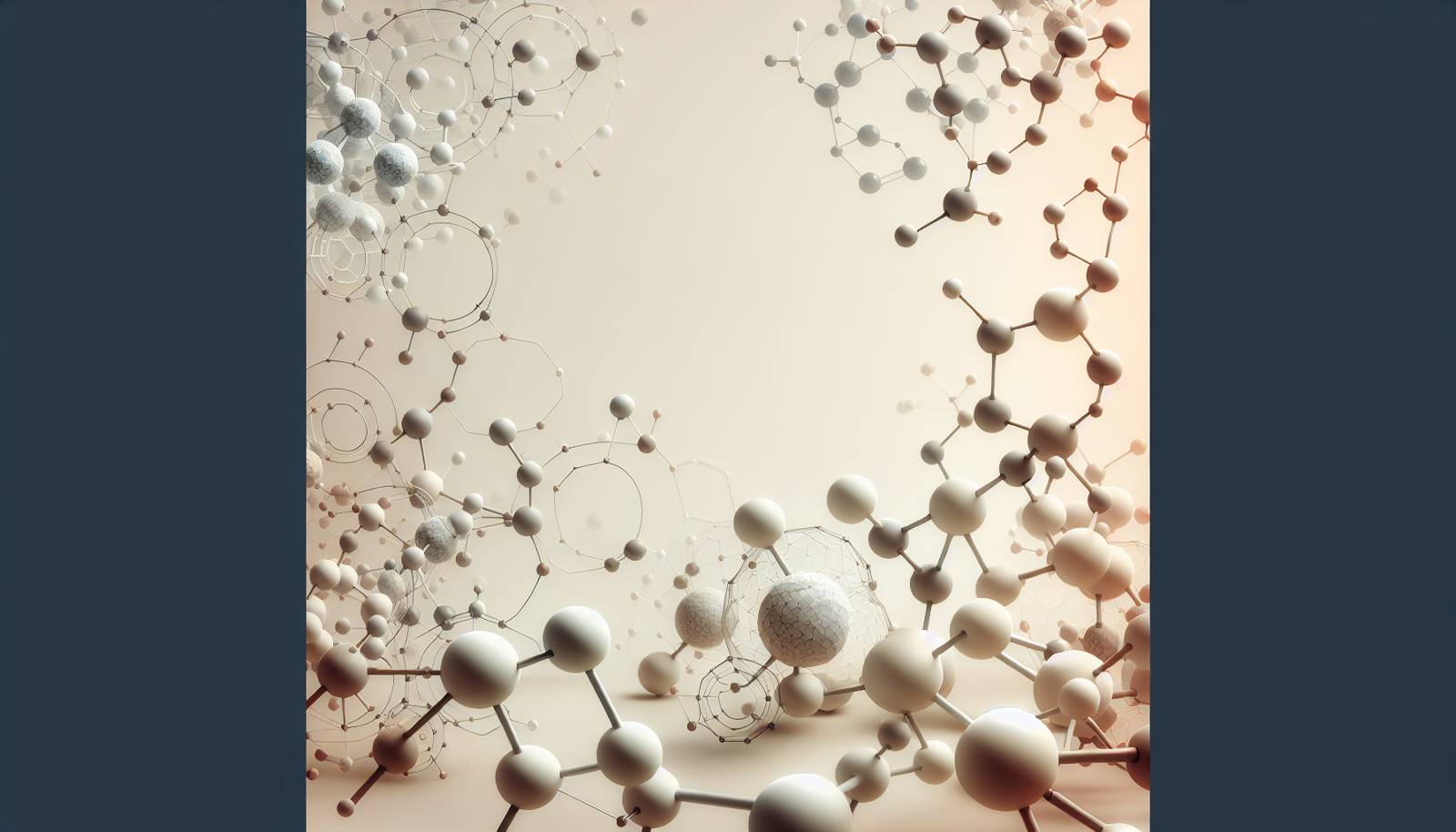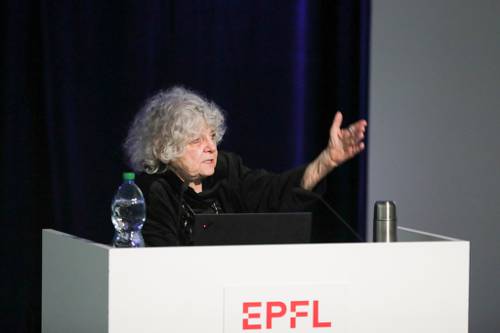
FAQ About Ada Yonath

Who is Ada Yonath?
Ada Yonath is a Nobel Laureate and crystallographer known for her groundbreaking research on the structure of ribosomes. She has significantly advanced our understanding of protein biosynthesis. Yonath's work has been pivotal in biochemistry and structural biology, paving the way for new insights into how proteins are produced within cells. Her contributions were recognized with the Nobel Prize in Chemistry in 2009, which she shared with Venkatraman Ramakrishnan and Thomas A. Steitz.

What was Ada Yonath's major scientific contribution?
Ada Yonath's major scientific contribution lies in her research on the structure and function of ribosomes. She was instrumental in elucidating the 3D structure of the ribosome, which plays a critical role in translating genetic code into proteins. This achievement has provided valuable insights into the protein synthesis process and has implications for the development of antibiotics, as many antibiotics function by targeting bacterial ribosomes.

When did Ada Yonath win the Nobel Prize?
Ada Yonath was awarded the Nobel Prize in Chemistry in 2009. She shared the prestigious award with Venkatraman Ramakrishnan and Thomas A. Steitz their collaborative efforts to uncover the structure and function of ribosomes, which are crucial for protein synthesis in all living cells.

What is the significance of Ada Yonath's research on ribosomes?
The significance of Ada Yonath's research on ribosomes lies in its profound impact on understanding the molecular mechanisms of protein synthesis. Her work has illuminated how ribosomes translate the genetic information encoded in mRNA into polypeptides and proteins essential for life. Additionally, this research has opened new avenues for antibiotic development, as ribosomes are a key target for many antibiotics used to treat bacterial infections.

Where was Ada Yonath born?
Ada Yonath was born in Jerusalem, Mandatory Palestine (now Israel) on June 22, 1939. Her early life in Israel set the stage for a distinguished career in science, culminating in pioneering advancements in crystallography and ribosomal research.

What educational background does Ada Yonath have?
Ada Yonath received her Bachelor of Science in Chemistry from the Hebrew University of Jerusalem in 1962. She went on to earn her Master of Science in Biochemistry and Biophysics, and later completed her Ph.D. in X-ray Crystallography at the Weizmann Institute of Science in 1968. Her extensive education laid the foundation for her future contributions to the field of structural biology.

How did Ada Yonath contribute to antibiotic research?
Ada Yonath contributed to antibiotic research by deciphering the structure of ribosomes, which are the target of many antibiotics. By revealing the intricate details of ribosomal structure, her work has provided insights into how certain antibiotics function and has guided the development of new antibiotics designed to overcome resistance in pathogens.

What awards has Ada Yonath received besides the Nobel Prize?
Besides the Nobel Prize, Ada Yonath has received numerous other awards and honors for her scientific achievements, including the Wolf Prize in Chemistry and the Israel Prize. Her work has been recognized globally, highlighting her impact on science and medicine.

What challenges did Ada Yonath face in her research?
Ada Yonath faced numerous challenges in her research, particularly in determining the complex structure of ribosomes, which are large and intricate assemblies of RNA and proteins. The difficulty of crystallizing ribosomes and the sheer computational power needed to analyze their structure were significant hurdles. Despite these challenges, her persistence and innovative approaches have led to successful breakthroughs.

Why is Ada Yonath's research important for understanding diseases?
Ada Yonath's research is crucial for understanding diseases because the ribosome's function is essential to cell biology, and any malfunction can lead to diseases. By understanding how ribosomes work and how antibiotics can alter their function, scientists can develop new treatments for bacterial diseases and understand genetic disorders related to protein synthesis more deeply.

What institutions has Ada Yonath been associated with?
Ada Yonath has been associated with several prominent research institutions. She spent much of her career at the Weizmann Institute of Science in Israel, where she conducted her groundbreaking research on ribosomes. Yonath has also worked at renowned international laboratories, including the Max Planck Institute in Germany and the Massachusetts Institute of Technology in the United States, contributing to her global impact in the field of biology.

What innovative techniques did Ada Yonath use in her research?
Ada Yonath employed innovative techniques in her research, particularly in the field of X-ray crystallography. She developed new methods to crystallize ribosomes, which was key to determining their complex structures. Her approach utilized cryo-bio-crystallography, allowing for the analysis of ribosomal particles in states close to their natural conditions, thereby improving the accuracy of structural determinations.

How has Ada Yonath influenced science education and outreach?
Ada Yonath has significantly influenced science education and outreach through her mentorship of young scientists and her active role in promoting science. She frequently gives lectures to students and participates in initiatives aimed at encouraging women to pursue careers in science. Her story serves as an inspiration to aspiring scientists, highlighting the value of perseverance and innovation in scientific research.

Why is Ada Yonath considered a pioneer in her field?
Ada Yonath is considered a pioneer in her field because she was among the first to tackle the complex challenge of deciphering the ribosome's structure. Her innovative approaches and successful outcomes have not only advanced structural biology but have also set new standards in how large biological complexes are studied. Her trailblazing work has inspired a new generation of scientists.

What personal qualities does Ada Yonath attribute to her success?
Ada Yonath attributes her success to qualities such as curiosity, perseverance, and a willingness to tackle difficult problems. Her determination to overcome scientific obstacles and her innovative thinking have been key factors in her ability to make groundbreaking discoveries in ribosomal research.

Has Ada Yonath written any notable publications?
Ada Yonath has authored numerous notable publications in top scientific journals, detailing her research on ribosome structure and function. Her papers are highly cited and have significantly contributed to our understanding of molecular biology and protein synthesis. Her publications continue to serve as key resources for researchers in structural biology.

How does Ada Yonath's research impact modern medicine?
Ada Yonath's research impacts modern medicine by enhancing our understanding of how antibiotics target bacterial ribosomes, which informs the development of more effective antibiotics that can combat resistant strains. Her insights into ribosomal function also contribute to the broader understanding of disorders related to protein synthesis, offering potential therapeutic avenues.

What impact did Ada Yonath's research have on structural biology?
Ada Yonath's research has had a profound impact on structural biology by setting a precedent in studying large and complex biological molecules like ribosomes. Her breakthroughs in crystallography and structural analysis have advanced the methodologies used in the field and have influenced a wide range of applications in biological and medical research.

What inspired Ada Yonath to pursue a career in science?
Ada Yonath was inspired to pursue a career in science by her curiosity about the natural world and her interest in unraveling complex biological mysteries. Her upbringing during challenging times in Jerusalem further fueled her determination to pursue education and contribute to scientific knowledge, ultimately leading her to a successful career in research.
